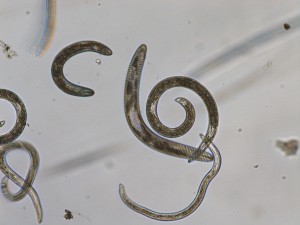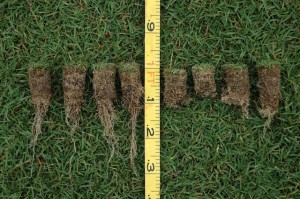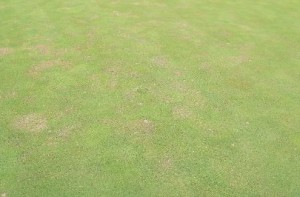Golf turf sample submission has been rather slow so far this season. Arguably, cooler temperatures and ample precipitation this spring have provided us with excellent growing conditions for cool-season turfgrass. As long as everybody’s grass looks good, then submissions stay down (bring on some heat!). There has been one exception this season, which is the frequent submission of samples for nematode analysis.
Of all the problems common on golf course turf, nematodes are the most poorly understood and may be the most difficult to control. Plant-parasitic nematodes are found in abundance in the turfgrass ecosystem feeding on the root biomass as obligate parasites. As populations build, feeding can damage root systems, which reduces the ability of the plant to take up water and nutrients from the soil. As a result, turfgrass subjected to external stresses – particularly bentgrass and annual bluegrass on greens and tees – will yellow, wilt, and thin. The confounding factor here is that turfgrass subjected to extra stress without high nematode populations will also yellow, wilt and thin!
Once the turf stand performs poorly, and usually after all remediation efforts fail, samples are submitted for nematode analysis. Nematode detection entails washing the critters out of the soil with a series of sieves and spins in a centrifuge. Once they are separated from the soil, we identify each nematode to genera and count them. The numbers are compared to thresholds and control recommendations are made.
So now what? The lab says you exceed thresholds. Clearly, adjusting management practices to relieve stress and improve root growth will be helpful. As far as chemical control, the most reliable material, Nemacur™, has been discontinued for sale since 2008. Existing stocks can be used, however, so use it if you got it. But what if you do not have Nemacur™? The insecticide Avid 0.15EC has a special local need label (24C) in some states, but not New Jersey, so it is illegal to use here. Curfew EC™ is a soil fumigant that also has a 24C in some states, mostly in the south, but not in New Jersey.

Thinning of bentgrass due to high nematode populations. Note the healthy plugs. Photo: Robert Trent Jones GC
New Jersey is limited to the bionematicide, Nortica™, and the fungicide/nematicide Multiguard Protect®. Each of these products has shown good potential in research trials, but both have some caveats to their use. Read and follow label recommendations carefully. Be aware that there are also a number of other botanical or microbial products on the market for nematode control (I counted 23 in an internet search). For most of them, field efficacy data is lacking or inconsistent. That does not mean that they never work. In fact, there are studies that show nematode suppression among them, but there is insufficient evidence to recommend their use.
See here for general information on nematode biology, sampling and thresholds.




